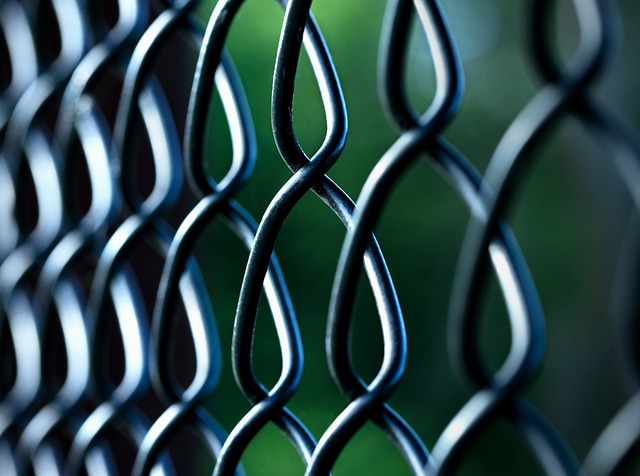In coastal regions, where harsh weather conditions and salt air pose unique challenges, durable wooden fencing is a popular and aesthetically pleasing solution. This article explores the various aspects of selecting and maintaining wood fences in these environments. From understanding the specific challenges to choosing the right wood types and installation techniques, we provide insights to ensure longevity and enhance the coastal landscape. Discover how the right fence can protect your property while seamlessly integrating with the natural beauty of the seashore.
- Understanding Coastal Fencing Challenges
- Benefits of Durable Wooden Fencing
- Choosing the Right Wood Types
- Installation Considerations for Coastlines
- Maintenance Tips for Longevity
- Enhancing Coastal Aesthetics with Wooden Fences
Understanding Coastal Fencing Challenges
Coastal areas present unique challenges when it comes to fencing due to their harsh environments, including salty air, frequent moisture, and strong winds. Traditional fencing materials often struggle to withstand these conditions, leading to regular maintenance or premature replacement. The primary goal is to find a durable solution that can resist corrosion, maintain structural integrity, and stand the test of time in such an unforgiving setting.
Wooden fencing, when chosen carefully, offers an excellent alternative. Opting for treated or tropical hardwoods that are naturally resistant to rot and decay ensures longevity. Additionally, proper sealing and regular maintenance can significantly enhance their durability, providing a robust and aesthetically pleasing fence without compromising strength in this demanding coastal landscape.
Benefits of Durable Wooden Fencing
Durable wooden fencing offers a range of advantages for coastal areas, where traditional materials often face unique challenges. One of its key benefits is aesthetic appeal; natural wood adds warmth and beauty to any landscape, providing a timeless design element that enhances property values. Unlike synthetic alternatives, wood has a classic charm that seamlessly blends with coastal environments, creating a welcoming atmosphere.
Furthermore, durable wooden fencing is an environmentally friendly choice. It is a renewable resource, making it a sustainable option for homeowners seeking eco-conscious solutions. Properly treated and maintained, wooden fences can withstand harsh weather conditions, including strong winds and salt air, ensuring they remain sturdy and long-lasting. This longevity reduces the need for frequent replacements, saving both time and money in the long run.
Choosing the Right Wood Types
When selecting wood for coastal fencing, understanding the local climate and environment is key. Saltwater exposure, high humidity, and frequent storms can take a toll on any material, but certain types of wood are better equipped to withstand these challenges. Look for woods that have natural resistance to moisture and insects, such as cedar or redwood. These species not only last longer but also maintain their aesthetic appeal even in harsh conditions.
Additionally, consider treated wood options like pressure-treated pine or recycled plastic composite materials. These alternatives are designed to be highly durable and resistant to rot, decay, and corrosion from saltwater. With proper maintenance, the right wood choice can ensure your coastal fencing provides long-lasting protection and security while complementing the natural environment.
Installation Considerations for Coastlines
When installing durable wooden fencing in coastal areas, several unique considerations come into play. One of the primary concerns is the impact of salt air and frequent humidity on the fence’s materials. Treated and weather-resistant woods like cedar or redwood are ideal choices for these environments due to their natural resistance to rot and decay. Proper drainage is also crucial; ensuring that water does not pool around or behind the fence will help extend its lifespan.
The terrain and local regulations should be taken into account as well. In coastal regions, the ground may be uneven or consist of softer soils that can settle differently over time. Adjustments to the fence’s design and installation might be necessary to accommodate these factors. Following local building codes and obtaining any required permits is essential to ensure a safe and compliant structure.
Maintenance Tips for Longevity
To ensure your durable wooden fencing stands strong against the coastal elements, regular maintenance is key. Start by cleaning the fence at least twice a year to remove salt deposits and other debris that can accelerate wood deterioration. Use a soft-bristled brush and mild detergent for this process.
After cleaning, apply a fresh coat of high-quality water-repellent sealer or stain designed for exterior use. This will create a protective barrier against moisture and UV radiation. Lastly, inspect the fence regularly for any signs of damage or rot, addressing issues promptly to prevent further deterioration and ensure longevity.
Enhancing Coastal Aesthetics with Wooden Fences
Coastal areas are known for their stunning natural beauty, and integrating durable wooden fencing into the landscape can enhance this aesthetic appeal without compromising on functionality. The right type of wood fence can add a touch of warmth and rustic charm to beachfront properties or coastal communities. Natural wood tones seamlessly blend with the surrounding environment, creating a harmonious balance between man-made structures and the natural coastal tapestry.
Moreover, wooden fences offer flexibility in design, allowing homeowners or developers to choose from various styles, from traditional picket fences to more contemporary vertical slat designs. These options enable customization to match individual preferences while still complementing the unique character of coastal areas. By carefully selecting durable wood species suitable for humid and salty environments, these fences can withstand the rigorous conditions of the coastline, ensuring they remain an attractive feature for years to come.
